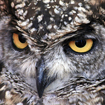Unit 5 - Vocabulary Lesson - Natural World
Intermediate level
Description
Materials
Main Aims
-
To provide clarification of Nature words in the context of Nature
Subsidiary Aims
-
To provide clarification of Nature words in the context of some stories
Procedure (45-55 minutes)
- Ask students how to keep the environment through volunteering to help keep the nature clean.
• Ss read the information of the nature below from reviews for different reviews. • Ss work in pairs to discuss: Is each review useful, normal, or both? What kind of charity institutes does each review describe? • Ss find words in exercise 1 that relate to the following: 1) very good (2) very bad 3) very funny 4) very silly, to start the next stage (the clarification).
• Show Ss pictures and ask them to describe each one by using extreme adjectives. then ask them if they know the meaning of adjectives which describe nature. Then try to elicit the meaning of the words and using the white board to clarify the adjective which relates to nature e.g. (endangered - damaged ) to them , and tell them that the words endangered and damaged have the same meaning but different in degrees and damaged is more dangerous than endangered . So, some adjectives have the same meaning but used in different ways used in different ways, and they also follow different rules. Let's see how: the adjectives (friendly, dangerous) dangerous can only be with extreme adjectives, "friendly" with non-extreme adjectives. • Using the W.B by writing "rabbit is dangerous." ask them to correct it. • Elicit the meaning of (endangered, destroyed, harmful, tame, damaged, tragic) using pictures, CCQs. • Drilling, then write the form on the WB.
• Ss answer exercise 2 in pairs: Read the the part article on page 57. • Open class feedback.
Peer corrections

